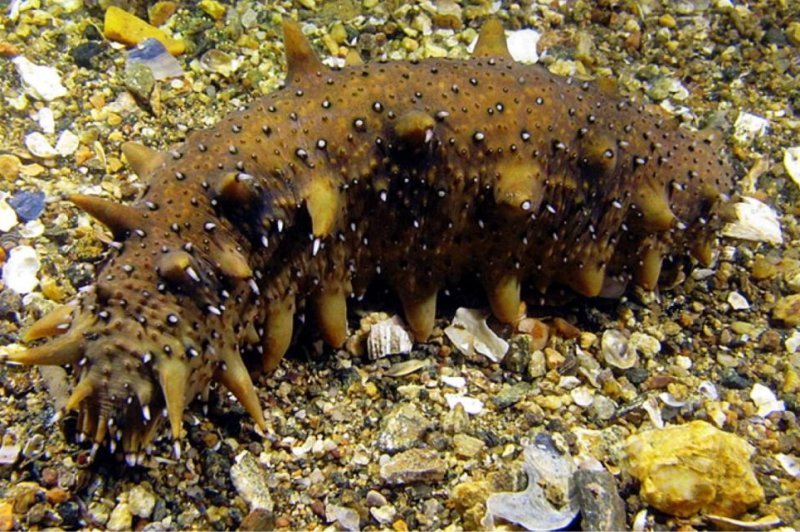Sea cucumbers and their soft bodies are unique from all other echinoderms. Photo by Qiang Xu
Oct. 12 (UPI) -- New genomic analysis is helping a team of scientists unravel the secrets of the cucumber, including its ability to regenerate tissue.
The genomic survey may also help scientists better understand how the unusual marine animal evolved a skeletal structure so different from its closest relatives.
Sea cucumbers -- of which there are 1,717 species -- form a class of the echinoderm phylum. Other echinoderm classes include sea urchins and sea stars, which are markedly different in structure and appearance.
Like their relatives in the phylum Chordata -- which includes all vertebrates, as well as sea squirts and lancelets -- echinoderms are deuterostomes, which means they develop an anus before a mouth. But unlike most other echinoderms, sea cucumbers don't form a hardened calcium exoskeleton. They can also quickly and efficiently repair and regrow damaged or lost body parts.
To locate the source of the sea cucumber's regenerative powers, a team of Chinese scientists sequenced 92 percent of the genome of the Japanese sea cucumber, Apostichopus japonicus. The researchers surveyed more than 30,000 of the species' genes.
Their analysis suggests sea cucumbers diverged from a group of hemichordates, a small group of marine invertebrates including acorn worms, some 533 million years ago. Some 54 million years later, sea cucumbers split from the rest of the echinoderm classes.
Over time, sea cucumbers minimized the expression of genes related to biomineralization, which explains the organism's soft body.
The new research also revealed sea cucumbers to host a unique set of duplicated genes, called PSP94-like genes, which allow them to regenerate their internal organs. This evolved alongside the sea cucumber's ability to eject its innards to ward off predators.
Scientists found the expression of another set of duplicated genes, fibrinogen-related proteins, were also linked with regeneration.
Researchers published their findings in a new paper, published this week in the journal PLOS Biology.
"The sea cucumber is a particularly promising model animal for regenerative medicine," Jianhai Xiang, a researcher with the Institute of Oceanology at the Chinese Academy of Sciences, said in a news release. "Our findings should also facilitate the understanding of the requirements for sustainable utilization and effective breeding of echinoderms, in support of the high-value sea cucumber industry."
Scientists are hopeful that their insights into echinoderm regrowth will eventually translate to human therapies.















